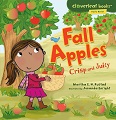
Nearby Miller library, located at the UW Botanic Gardens’ Center for Urban Horticulture (3501 NE 41st Street) has recently re-opened from Mondays to Saturdays.
What brings you joy this summer? For the characters in these books, it might be feasting on a picnic, wishing on a dandelion, or taking a hike.Books that are read:
FLORETTE by Anna Walker
APPLE PIE ABC by Alison Murray
FALL APPLES: CRISP AND JUICY by Martha E. H. Rustad and Amanda Enright
Story time is geared towards children ages 3 to 8 and celebrates gardens, plants and nature. Go here for more information.
In those divisive times of the late 1960’s and 1970’s, many new ideas began to form regarding how to live on, properly use, and safeguard the resources on our earth. This included groups from the “flower children” to academics. Learned horticulturists, botanists, and academics in the Northwest created a plan which called for the creation of a new academic unit at the University of Washington to be called the Center for Urban Horticulture. It would be different from traditional production horticulture which had been taught for hundreds of years. Instead it would bring disciplines together which seldom or never interacted.
The Center for Urban Horticulture, the first of its kind in the world, and thereafter copied around the world, officially began its life when Professor Harold B. Tukey, Jr, from Cornell University arrived as its founding director in May 1980. Dr. Tukey’s family, including father and brothers, were well known in the horticulture academic arena. He first worked along with an administrator, Sally Dickman, in an office in Anderson Hall on the UW campus. He also was UW director of the Washington Park Arboretum and directed that staff, headed by Joseph A. Witt, curator. In 1981, two new faculty arrived: myself, John A. Wott, from Purdue University in April, and James A. Clark, from Rutgers University in June.
The initial promise of full state funds soon evaporated as the State of Washington rapidly slipped into a recession and all hope of state funds for building and future program building was futile. Never daunted, Dr. Tukey, aided by the good will of Provost George Beckman (who did provide what seed money he could), along with community horticulture stalwarts such as Elisabeth Carey (Betty) Miller began a campaign to raise the millions of dollars needed privately. As you now see today, they were successful. CUH, now a part of the University of Washington Botanic Gardens, is an invaluable resource in the Northwest as well as nationally and internationally.
No comments:
Post a Comment